In today’s digital landscape, the convergence of IT, Cybersecurity, and DevOps is essential for building resilient and agile organizations. This powerful synergy ensures that security is a fundamental component of the entire development lifecycle, not an afterthought. By integrating these disciplines, businesses can accelerate innovation while proactively managing risk.
Building a DevSecOps Culture from the Ground Up
Building a DevSecOps culture from the ground up requires a fundamental shift left in security philosophy, where shared responsibility becomes the cornerstone. It begins with executive sponsorship to champion the initiative and provide necessary resources. Teams must then integrate security tools and practices directly into the CI/CD pipeline, automating security checks for early vulnerability detection. Continuous training and transparent communication break down traditional silos, fostering collaboration between development, security, and operations. This holistic approach embeds security into the entire application lifecycle, creating a resilient and proactive engineering environment where security is a feature, not an afterthought.
Shifting Security Left in the Development Lifecycle
Building a DevSecOps culture from the ground up requires a fundamental shift, embedding security as a shared responsibility for every team member. It starts with leadership championing the **DevSecOps transformation** and providing the necessary tools and training. Development, operations, and security teams must collaborate continuously, integrating automated security checks directly into the CI/CD pipeline. This proactive approach identifies vulnerabilities early, drastically reducing risk and accelerating delivery. As one expert notes,
You can’t bolt on security at the end; you must build it into the foundation of your development lifecycle.
This cultural evolution fosters a mindset where security becomes a natural and integral part of the software creation process.
Fostering Collaboration Between Development and Security Teams
Building a DevSecOps culture begins not with tools, but with a shared story of responsibility. Imagine a development team where security is a natural chapter in their workflow, not a disruptive epilogue. This requires embedding security champions early, fostering collaboration through shift-left security practices, and automating checks into the CI/CD pipeline. It’s a cultural transformation where everyone becomes a custodian of the application’s safety, turning potential vulnerabilities into shared victories and building a truly resilient software supply chain.
Establishing Shared Responsibility for Security Posture
Building a DevSecOps culture from the ground up requires a fundamental shift, moving security from a final gatekeeper to a shared responsibility integrated into every phase of the software development lifecycle. This cultural transformation hinges on cross-functional collaboration, where developers, operations, and security teams unite with automated security tools and continuous feedback loops. By embedding security practices early, organizations can achieve faster, more resilient software delivery. This proactive approach is the cornerstone of achieving robust cloud security posture, turning potential vulnerabilities into managed risks and fostering a mindset where “every build is a secure build.”
**Q&A:**
* **Q:** What’s the first step in starting a DevSecOps transformation?
* **A:** The critical first step is fostering collaboration and breaking down silos between development, security, and operations teams through shared goals and open communication.
Essential Security Practices for DevOps Pipelines
Imagine a developer merging code that unknowingly contains a secret key. Without a guardrail, this secret flows through the entire DevOps pipeline, a digital river carrying a hidden vulnerability. To prevent this, shift-left security is paramount, integrating automated security scanning directly into the earliest stages of development. Secrets are managed in dedicated vaults, infrastructure is defined and checked as code, and every container is scanned for weaknesses. This continuous, automated vigilance ensures that security is woven into the very fabric of the software delivery process, protecting the software supply chain from source to production.
Integrating Automated Security Scanning Tools
Securing your DevOps pipeline is a non-negotiable pillar of modern software delivery. To build a resilient software supply chain, organizations must embed security at every stage. This proactive approach, known as DevSecOps, integrates automated security scanning for code and dependencies, strictly enforces least-privilege access controls with robust secrets management, and ensures all infrastructure is defined through immutable, version-controlled code. By shifting security left, teams can detect vulnerabilities earlier, drastically reduce remediation costs, and accelerate deployment cycles with unwavering confidence.
Managing Secrets and Credentials Securely
In the high-stakes relay of modern software delivery, the DevOps pipeline is the track. To prevent security from becoming a dropped baton, it must be embedded into every stride. This philosophy of **shifting left security practices** means integrating automated security gates directly into the CI/CD workflow. Secrets are vaulted, not hard-coded; container images are scanned for vulnerabilities before deployment; and infrastructure code is linted for misconfigurations. This continuous, automated vigilance ensures that security is a seamless part of the race, not a hurdle that stops the team at the finish line.
Hardening Container and Cloud Infrastructure
Essential security practices for DevOps pipelines, often called DevSecOps, integrate security throughout the software development lifecycle. This proactive approach begins with securing the pipeline infrastructure itself and managing access with strict principles of least privilege. A cornerstone practice is automated security scanning, which continuously checks code for vulnerabilities, analyzes dependencies for known risks, and assesses container images for misconfigurations. By addressing issues early, teams prevent security debts from accumulating in production environments.
Shifting security left to the earliest stages of development is the most effective way to reduce cost and remediation time.
Furthermore, all secrets such as API keys and passwords must be managed through dedicated vaults, never hardcoded. Finally, ensuring the immutability of deployed artifacts guarantees that what was tested is what runs in production, creating a secure and auditable release process.
Leveraging Automation for Continuous Compliance
Leveraging automation for continuous compliance transforms a traditionally reactive, manual process into a dynamic and proactive strategic advantage. By integrating intelligent tools that continuously monitor systems and data in real-time, organizations can automatically enforce policies, generate audit trails, and instantly flag anomalies. This shift not only drastically reduces human error and operational costs but also builds a resilient framework that adapts to regulatory changes seamlessly. Ultimately, it empowers businesses to maintain a robust security posture, ensuring they are always audit-ready and can confidently focus on innovation instead of manual oversight.
Implementing Policy as Code for Governance
Leveraging automation for continuous compliance transforms a traditionally reactive process into a proactive, always-on strategy. By using specialized software, organizations can automatically monitor controls, scan for vulnerabilities, and generate audit-ready reports in real-time. This shift not only slashes manual effort but also significantly reduces the risk of human error and costly non-compliance penalties. Adopting a continuous compliance framework ensures your security posture is consistently aligned with ever-changing regulations, turning compliance from a periodic headache into a seamless part of your daily operations.
Generating Real-Time Compliance Reports
Leveraging automation for continuous compliance transforms a traditionally manual, point-in-time activity into a dynamic, always-on process. By integrating specialized software, organizations can automatically monitor controls, scan for regulatory changes, and assess risk in real-time. This proactive approach significantly reduces human error and ensures audit readiness. Key benefits include streamlined evidence collection, automated policy enforcement, and immediate alerts for any deviations. This shift enables businesses to move from reactive audits to a culture of ingrained compliance. Adopting a continuous compliance framework is essential for navigating complex regulatory landscapes efficiently and securely.
Automating Vulnerability Management Workflows
Leveraging automation transforms compliance from a reactive audit burden into a proactive, strategic advantage. By implementing a continuous compliance monitoring framework, organizations can automatically scan their digital environments in real-time against regulatory standards. This approach enables immediate detection of configuration drift or policy violations, triggering automated remediation workflows. This dynamic system not only slashes manual effort and audit preparation time but also builds a resilient security posture, turning governance into a competitive differentiator. continuous compliance framework.
Threat Detection and Response in a Dynamic Environment
Threat detection and response in a dynamic environment is all about staying agile. As cloud infrastructure and remote workforces constantly change, security teams can’t rely on static defenses. They use advanced tools for continuous monitoring and behavioral analysis to spot anomalies in real-time across the entire digital landscape. It’s a constant game of cat and mouse against sophisticated attackers. When a threat is found, the focus shifts to swift incident response to contain the damage, eradicate the threat, and get systems back to normal as quickly as possible.
Monitoring for Anomalies in Real-Time Data Streams
In today’s rapidly evolving digital landscape, effective cybersecurity threat intelligence is the cornerstone of robust threat detection and response. Dynamic environments, such as cloud-native infrastructure and hybrid networks, demand a proactive security posture. This requires continuous monitoring and behavioral analytics to identify anomalous activities that signature-based tools miss. A mature strategy integrates automated response playbooks, enabling security teams to contain incidents like ransomware or lateral movement within minutes, not days, significantly reducing potential damage.
**Q&A:**
* **Q:** What’s the biggest challenge in a dynamic environment?
* **A:** The sheer scale and pace of change, which creates a constantly expanding attack surface that traditional, static defenses cannot protect.
Implementing Chaos Engineering for Resilience Testing
In the ever-shifting digital landscape, threat detection and response is a constant hunt. Adversaries don’t follow a script, so modern cybersecurity must be a living, breathing practice. It relies on continuous monitoring and behavioral analytics to spot the subtle anomalies that signal an active breach. This proactive security posture allows teams to move from a reactive stance to a strategic one.
The true test is not finding the threat, but containing it before critical assets are compromised.
This dynamic dance of action and reaction is the core of modern digital defense, demanding both advanced tools and seasoned intuition.
Orchestrating Incident Response Within CI/CD
In a dynamic digital landscape, where new assets and vulnerabilities appear constantly, threat detection and response must be a https://ignis.solutions fluid, continuous hunt. Imagine a security team not just waiting for alarms, but proactively sifting through digital noise, connecting subtle anomalies across cloud instances and user endpoints. This relentless pursuit of advanced threats allows them to isolate a compromised container before it can exfiltrate data, adapting their defense in real-time. This proactive security posture is essential for modern resilience, transforming a potential breach into a contained incident.
Measuring the Success of Your Security Integration
Measuring the success of your security integration requires a shift from simply tracking alerts to analyzing tangible business outcomes. Key metrics should extend beyond blocked threats to include mean time to detect (MTTD) and mean time to respond (MTTR), which directly reflect operational efficiency and resilience. A truly mature program also quantifies risk reduction and demonstrates a clear return on investment by linking security efforts to protected revenue and avoided compliance fines. Ultimately, a successful integration is one that becomes an invisible, yet indispensable, layer of your business operations. Continuously monitoring these security metrics provides the critical data needed to justify future investments and prove that your security posture is not just present, but performing.
Key Performance Indicators for Security Posture
Measuring the success of your security integration is critical for validating your cybersecurity strategy. Effective metrics extend beyond simple threat counts to focus on key performance indicators like mean time to detect (MTTD) and mean time to respond (MTTR). A lower MTTD signifies your integrated tools are correlating data effectively for faster identification, while a reduced MTTR demonstrates that automated playbooks are functioning correctly. This continuous security posture assessment provides a clear picture of your operational resilience and return on investment, ensuring your security stack operates as a unified defense system rather than a collection of disparate tools.
**Q&A**
**Q: What is the most important metric for a new security integration?**
**A:** Initially, focus on Mean Time to Detect (MTTD) to confirm the integration is providing the intended visibility and alert fidelity.
Tracking Mean Time to Detection and Remediation
Measuring the success of your security integration is a critical component of a mature cybersecurity program. Effective metrics extend beyond simple tool deployment, focusing instead on tangible outcomes like reduced mean time to detect (MTTD) and mean time to respond (MTTR) to incidents. By tracking these key performance indicators (KPIs), alongside metrics such as the number of automated threat blocks and compliance audit findings, organizations can quantify their security posture. This data-driven approach provides a clear picture of the return on investment for security tools and highlights areas needing improvement. This process is essential for achieving a robust security operations framework and demonstrating continuous security improvement to stakeholders.
Quantifying Risk Reduction Over Time
Measuring the success of your security integration is critical for validating your security posture and guiding strategic investment. Move beyond vanity metrics and focus on key performance indicators (KPIs) that directly reflect risk reduction and operational efficiency. Track quantifiable data such as mean time to detect (MTTD) and mean time to respond (MTTR) to incidents. A mature cybersecurity framework also monitors the percentage of automated responses and the reduction in false positives, demonstrating a streamlined and effective security operations center. This continuous improvement cycle ensures your defenses evolve with the threat landscape.




Leave a Reply